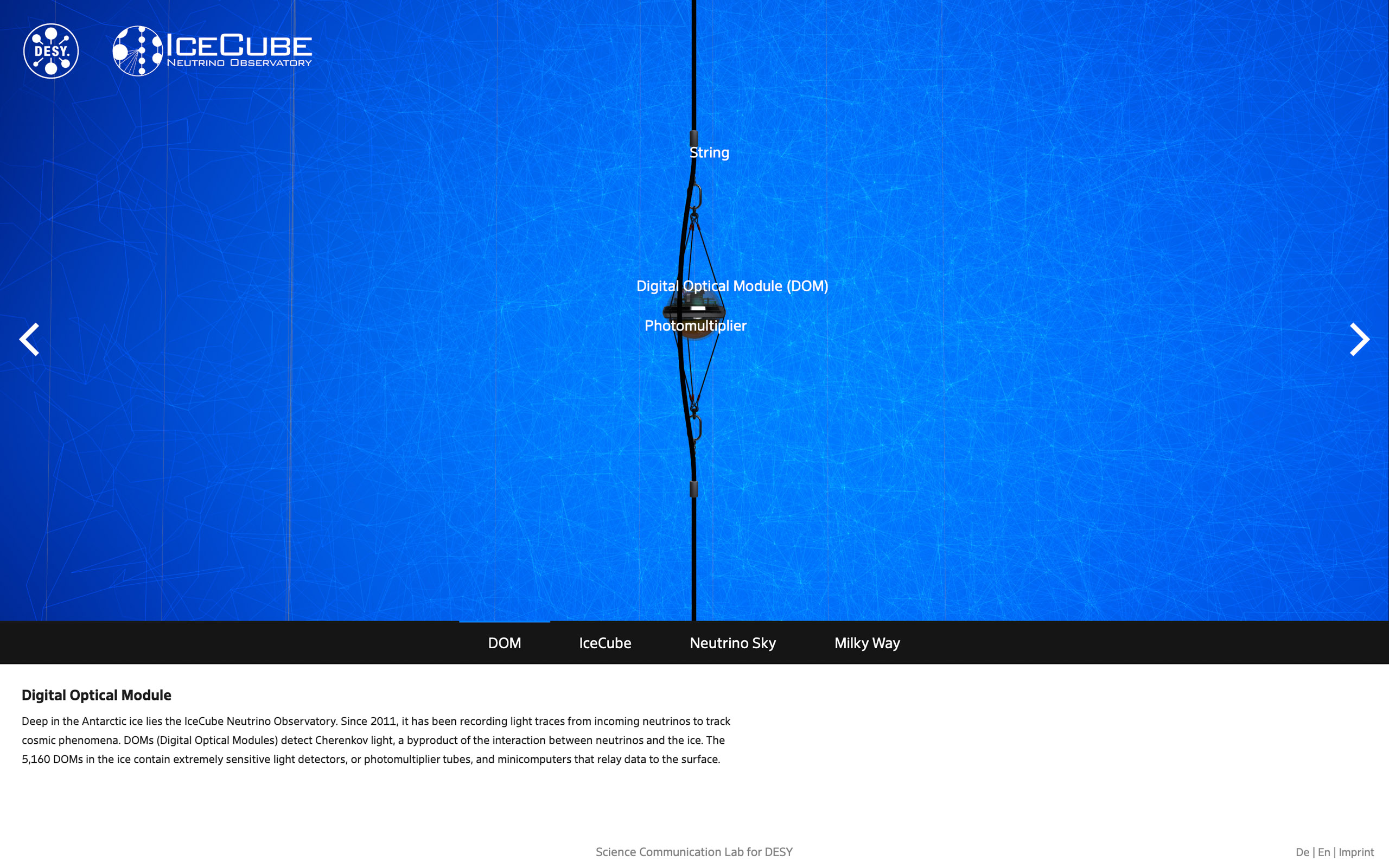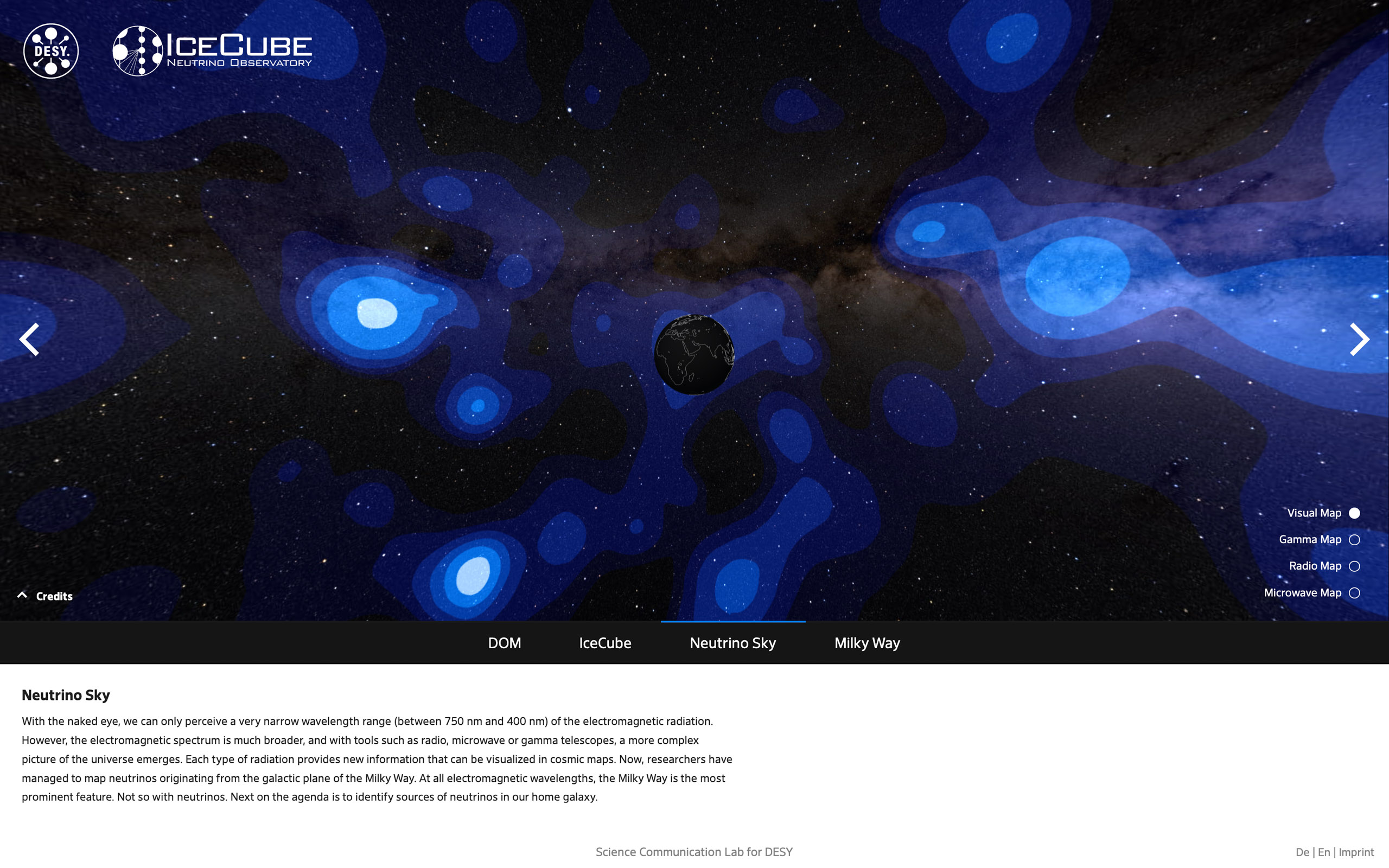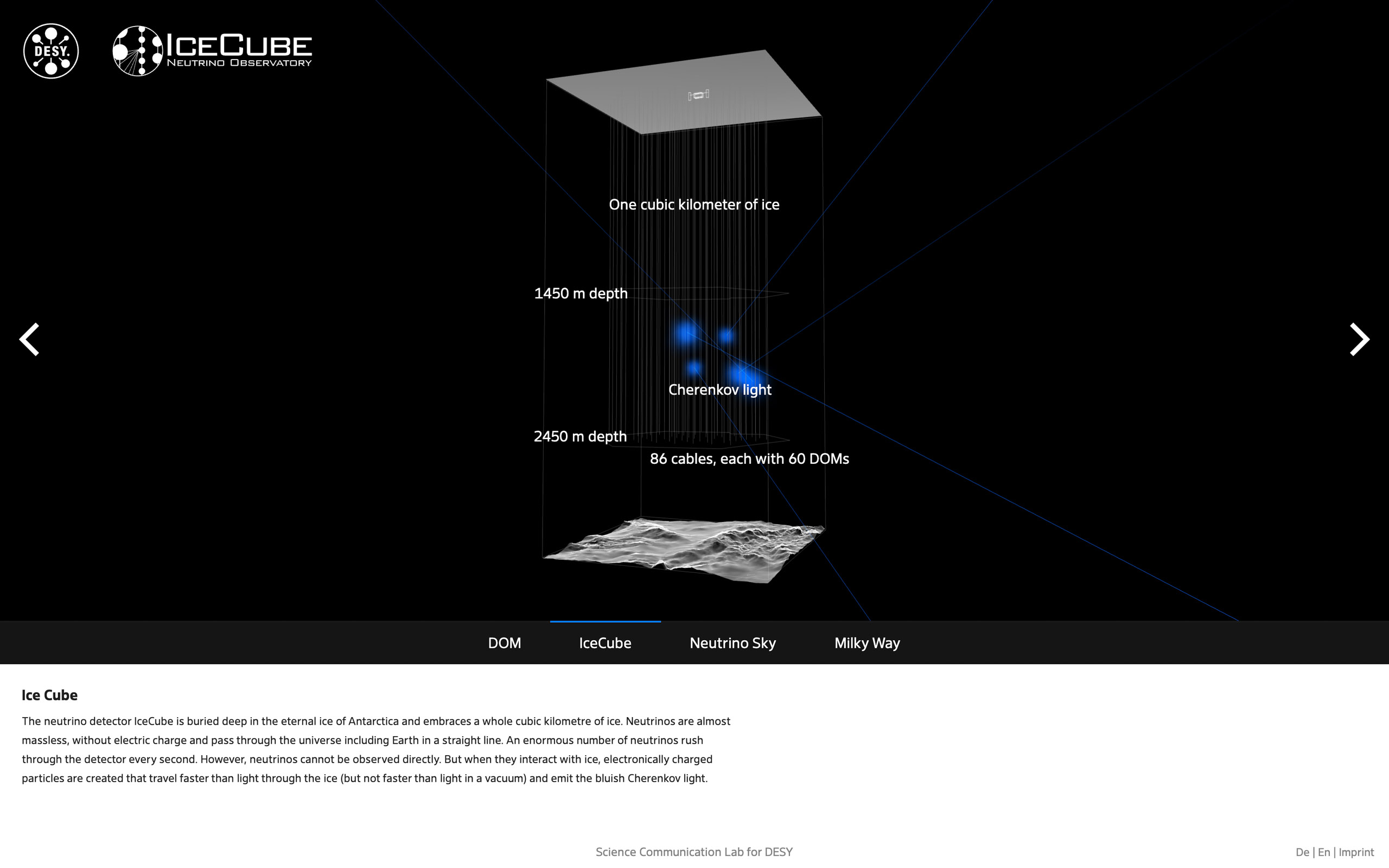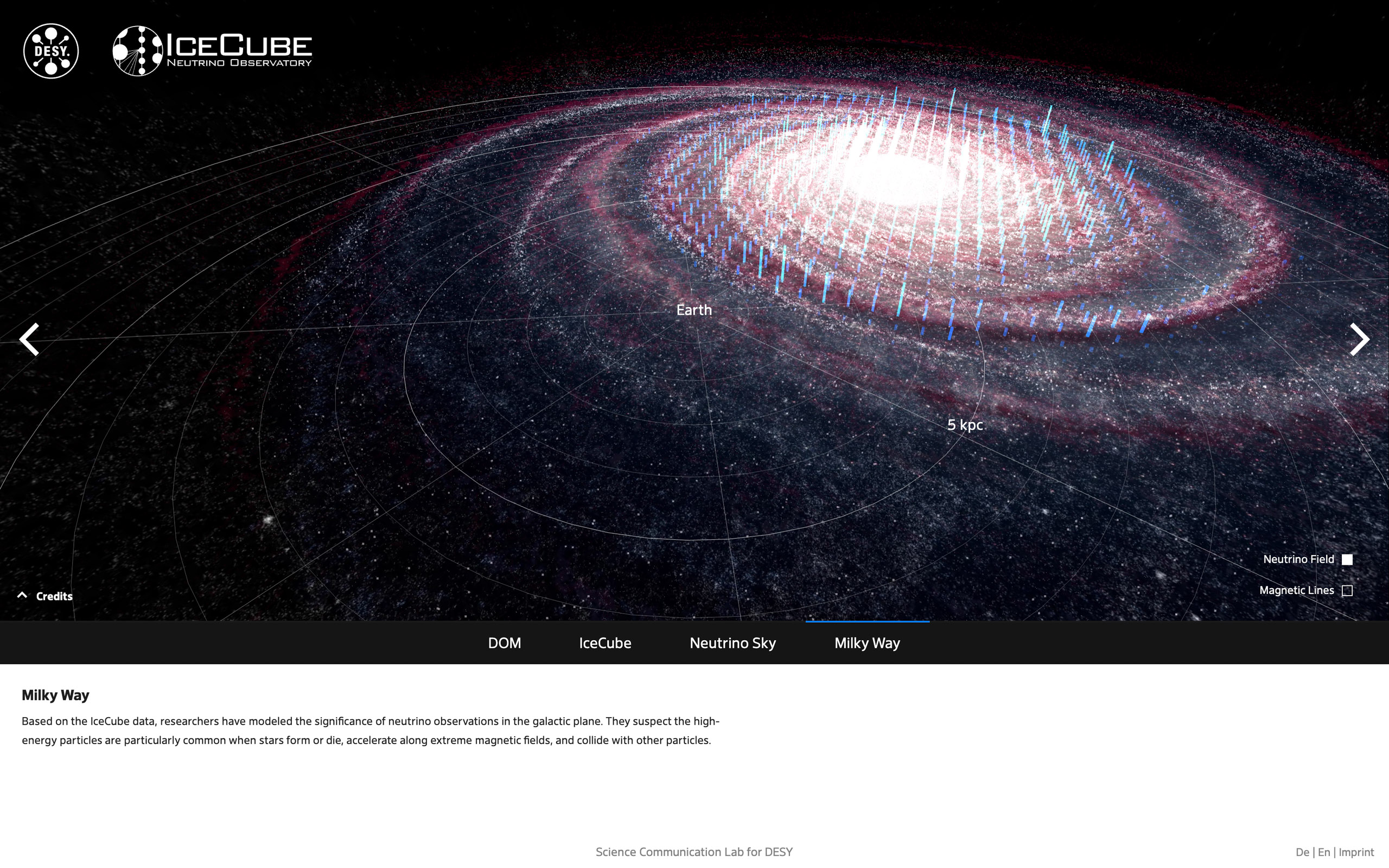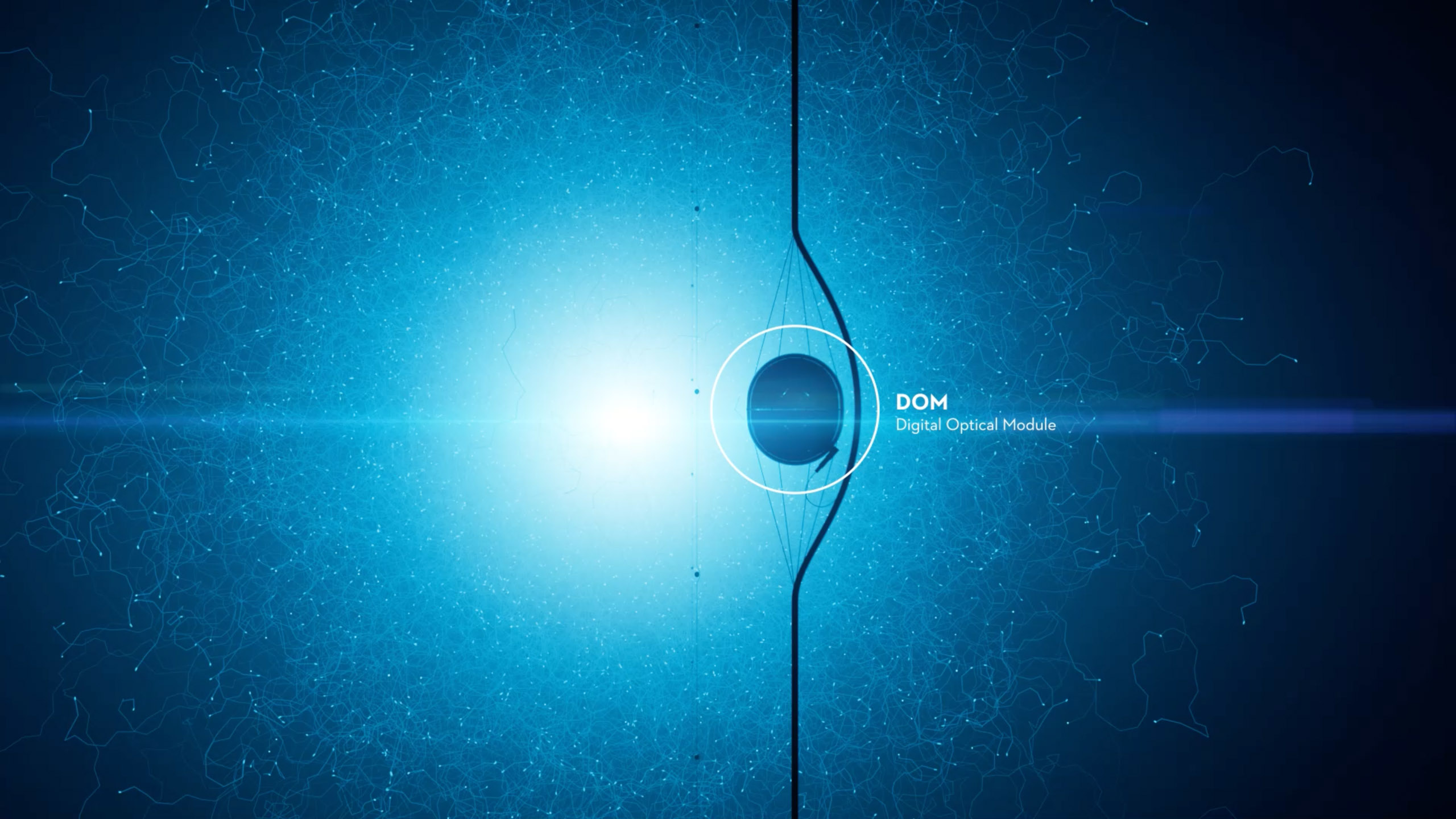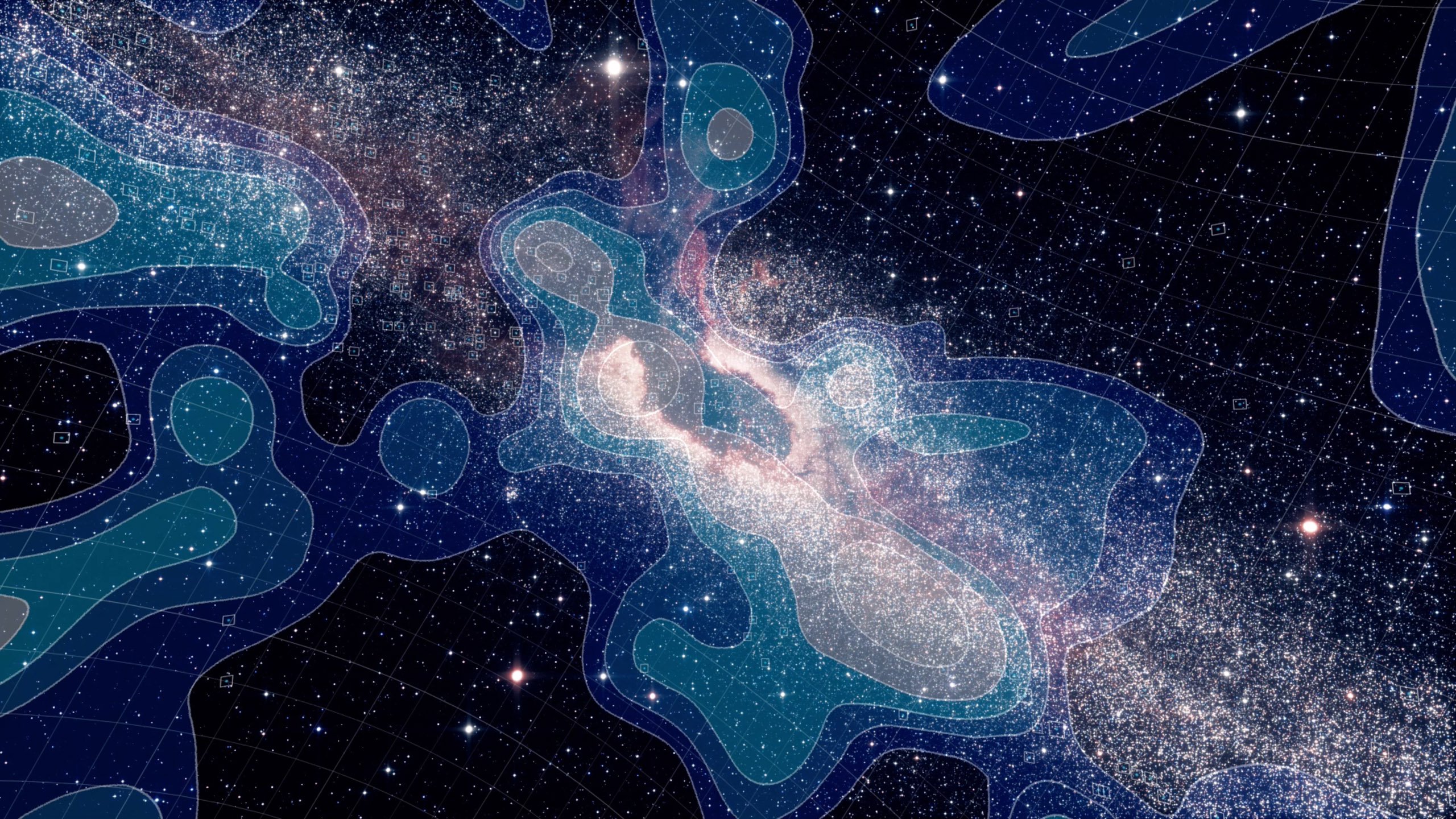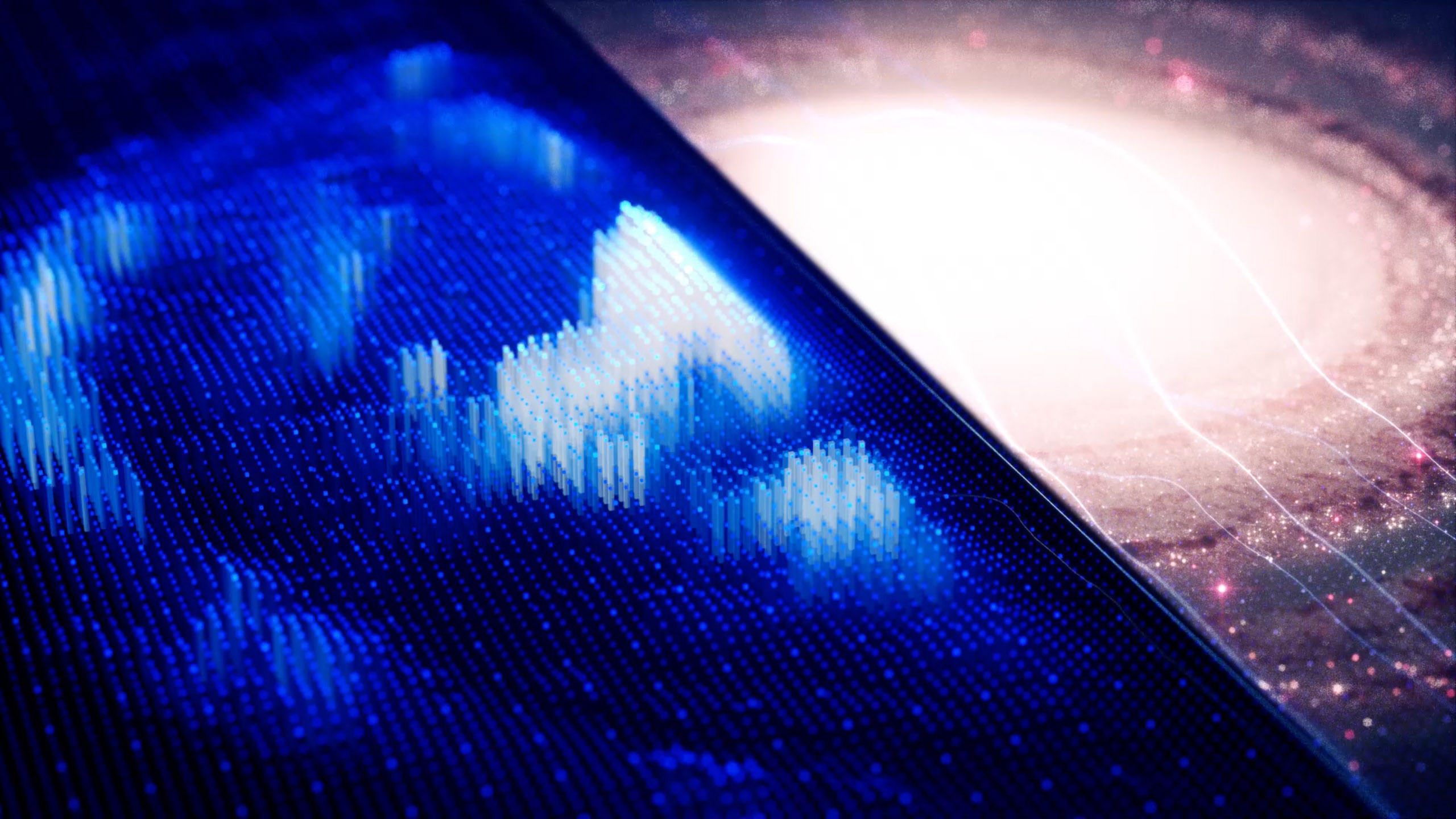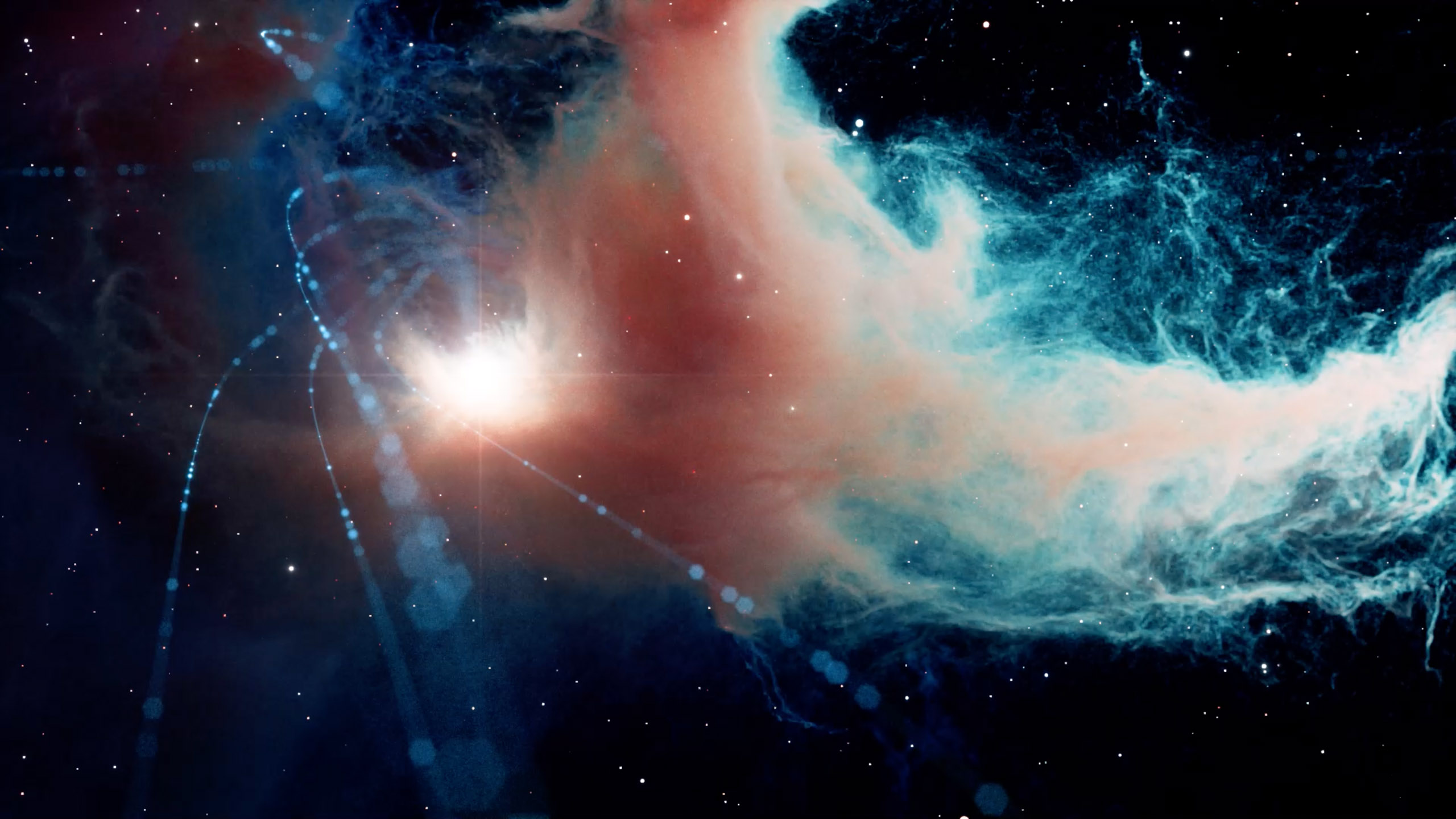Milky Way In Neutrino Light
CLIENT
Deutsches Elektronen-Synchrotron DESY
SFB1491 Cosmic Interacting Matters
RESEARCH FIELD
TYPE
Web, Animation
YEAR
2023
LINK
Deutschen Forschungsgemeinschaft
DFG Bundesministerium für Bildung und Forschung
SFB1491
IceCube Neutrino Observatory
Margit Sander
Fabian Heinitz - substan
Deep in the Antarctic ice lies the IceCube Neutrino Observatory. It was built to detect neutrinos - tiny, ghostlike astronomical particles. An enormous number of neutrinos pass through IceCube every second. Thus, IceCube detects one hundred thousand neutrinos per year that are created in the Earth’s atmosphere. The interesting ones however are those, arriving from the cosmos, but these are only detected about 100 times per year. It is very difficult to filter the few cosmic neutrinos out from the rest.
The break-through, that has now been published in the journal Science, comes from researchers of the IceCube Collaboration. They have succeeded in filtering the large number of neutrinos with the help of machine learning. What they found was mind-blowing: neutrinos originating from the Milky Way can reveal information from places in the Universe that were previously obscured by gas and dust, regions of space from which light cannot escape.
Give it a try!
More projects
Get in touch with us! ➞
Science Communication Lab
Rappaport Duscher GbR
Heiligendammerstraße 15
24106 Kiel, Germany
Phone: +49 431 53011140
Mail: hi@scicom-lab.com
© 2015 - 2024 Science Communication Lab
All Rights Reserved
